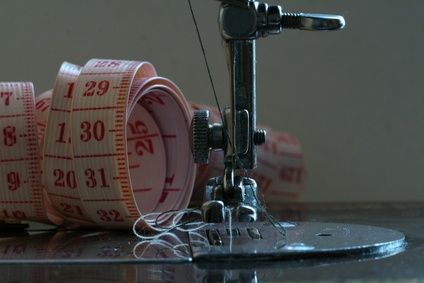Yesterday we were housebound by that storm that has hit half of North America. It brought around 40 cm of snow to my region, that is 2 1/2 feet for those in Imperial measure. A lot of shoveling, my husband is a gem. Not only do we have our own drive and sidewalk to do, we have the corner lot as well, since we own that house and rent it out. Tenants don't shovel, so landlords must do the chore.

This is a view of the street across from our house in late afternoon yesterday. More snow fell overnight with more shoveling this morning.
Being housebound, I managed to sew more on my wool jacket. Having charged ahead and realised I completely forgot to insert the pockets, I had to unpick the side seams and put those in. Which prompted me to post about pressing, since I was trying to press pockets in a garment that was half-constructed and no longer flat. Never say you won't make the same mistake twice!
On to the lining. This pattern gives a cheater method for putting in the facing and lining, the instructions tell you to simply place the facing on top of the lining and fold under the raw edge and top-stitch it down. That goes against the grain for me, so I trimmed the front lining so that I could seam the two together in the traditional way, and I also put in some piping in that seam. My friend Mary puts piping into all her seams like this and it is a nice touch. She uses old ties that she picks up, getting some nice silk that way. I used some polyester blouse weight fabric that I had, with red and black in it.

Some years ago, in an outerwear jacket class,
Barbara Emodi had us make piping for insertion into seams and she recommended using knitting yarn as the filler. I have used it ever since, because it is soft and squishy and gives a fine piping that isn't stiff.

Here are the front linings ready to be sewn to the sleeves and back. So far, I now have the lining constructed, ready to put on the collar to lining/facing unit and also to the jacket and then put the two together.

And this is what arrived by post this morning! I ordered three pieces of fabric from
Vogue FabricsBeing in Canada, the mailing costs are quite high, so it is simply not worth ordering just one small piece of fabric; you have to make the order worth while. After all, shipping costs $32.95 to Canada regardless of the size of your order. But this mailing of swatches didn't pose a problem; I had no difficulty choosing enough fabrics to order!
The one on the bottom left is Comeback Linen, a cross woven flax at $14.99 per yard. I ordered enough to make pants and a jacket. The swatch looked quite grey, even though it is called navy and, sure enough, it is a lovely subtle navy in the full yardage. The fabric in the middle is a polyester chiffon in lovely soft shades of blue grey, and coordinates really well with the flax/linen piece. I can't resist those sheer fabrics that are so soft; I am planning a shirt/jacket with this one, that can be worn over a dress. The piece on the right is a polyester jersey knit, black background with grey and white spots. I have enough for a knit top in this one.
I have been ordering fabrics from Vogue Fabrics for about a year now and have always been very pleased with the quality of their fabrics and their excellent service. They also sell all sorts of notions from thread to lining to shoulder pads, and also quite a few independent patterns. I highly recommend the company. I look forward to their bi-monthly mailings that come with about 30-40 swatches of colour-coordinated fabrics.
I do realise that I should be buying at the same rate at which I sew, but I just can't help myself sometimes.















